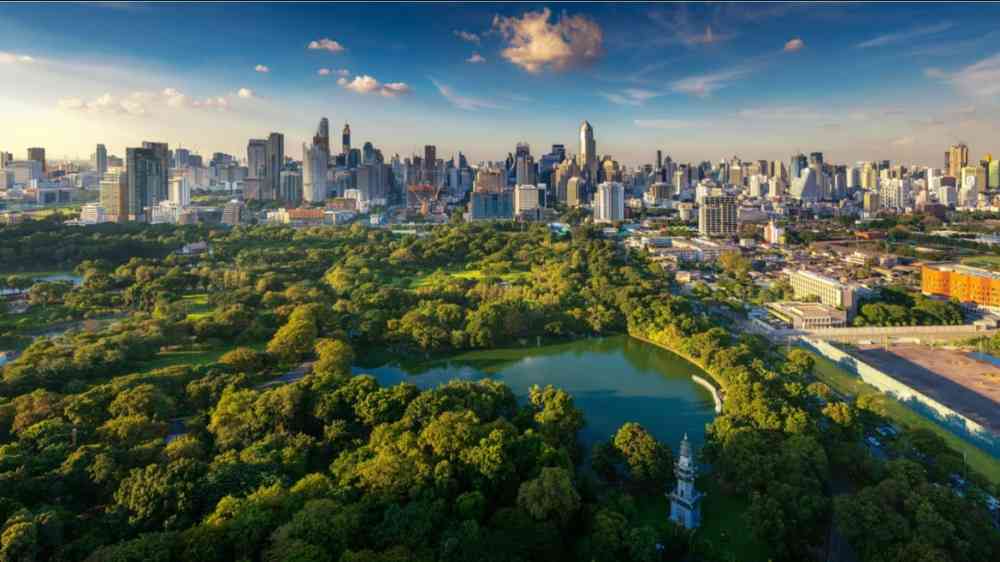Nature-based solutions are no quick fix for making cities more liveable

From 26-30 June 2022, the 11th World Urban Forum – one of the most significant global platforms for cooperation around sustainable urbanization – will bring together around 20 000 representatives from national governments, universities, civil society and development organizations in Katowice, Poland.
The forum calls for the identification of pathways to transform cities for a better urban future through six dialogues that will explore different dimensions of transformation. NBS feature under the forum’s dialogue on green urban futures, representing an “integrated approach to deliver environmental value” that can help to restore urban ecosystem services.
NBS: Adaption and maladaptation
While NBS may be able to support this goal, sometimes they end up causing just as many problems as they aim to solve.
In Bangkok, the recently constructed Chong Nonsi Canal Park, modelled after the Cheonggyecheon Restoration Project in South Korea promised a “touch of Seoul” for Bangkok’s central business district.
While the park provides a recreational area for visitors and claims to help treating the polluted water below the surface, the design faces practical limitations. The formerly open canal has been partially covered by a concrete platform and 30-year-old large leafy native trees cut down and replaced by smaller non-native species.
Smaller trees and more concrete leads to hotter temperatures. Meanwhile, there has been little improvement in water quality so far. Critics also point to a lack of genuine consultation saying local citizens were not fully engaged in decisions.
If social implications are not integrated in the design and implementation, NBS can lead to impacts that exacerbate existing inequalities as explored in a recent SEI series.
For example, through processes of “green gentrification”, poor communities can often be priced out as land prices increase in the wake of new parks and green areas, leaving them unable to access the benefits. An example of this process can be seen with the construction of Thailand’s most prominent piece of urban green infrastructure – the Chulalongkorn Centenary Park – which involved the clearance of former shophouses that were replaced with shopping malls and luxury apartment buildings.
In Hangzhou, China, known as a “garden city”, urban greening initiatives focused on revitalizing neglected spaces, included building parks on former factory sites, retrofitting green space along formerly dilapidated canals, main roads and railway lines, and mass tree planning on city streets.
However, due to the location of many of the green spaces next to main roads, the park users suffered increased exposure to air pollution and even the smallest green space embellishments inflated property prices. A 2014 study found that the project was “driving up prices in the urban core, where densities are highest, parks are fewer and temperatures are the hottest”.
Toward liveable cities
It is commendable that cities in the Global South are putting urban greening and NBS at the forefront of their environmental policies. In Bangkok, the Chulalongkorn Centenary Park and Chong Nonsi Canal Park, as well as the recent Benjakitti Forest Park show commitment to testing innovative solutions and improving urban livability.
However, as climate extremes intensify, form cannot be put above function. Moreover, as the IPCC ARG Working Group II Report reminds us, poor and marginalized communities will be the hardest hit by climate impacts.
For NBS to be truly transformational, they need to be carefully considered as part of integrated urban planning which addresses the complexity of the urban landscape and the needs of local communities within it.
These issues are understandably daunting for policymakers and municipalities.
Recent studies have tried to quantify market and non-market benefits of NBS to account for the range of environmental and social co-benefits that NBS can deliver compared to traditional approaches, or the cost of doing nothing. These tools can be useful for decision makers who are faced with difficult choices about how to allocate scarce resources.
The World Urban Forum background paper highlights participatory and inclusive decision-making process as a critical part of the implementation of greening programmes.
A key concern is NBS being implemented “for show” rather than as solutions for environmental challenges or addressing community needs.As we count down to the World Urban Forum and reflect upon the call for green urban futures, it is critical to keep issues of functionality and social equity at the forefront so that interventions actually lead to more livable cities for all.